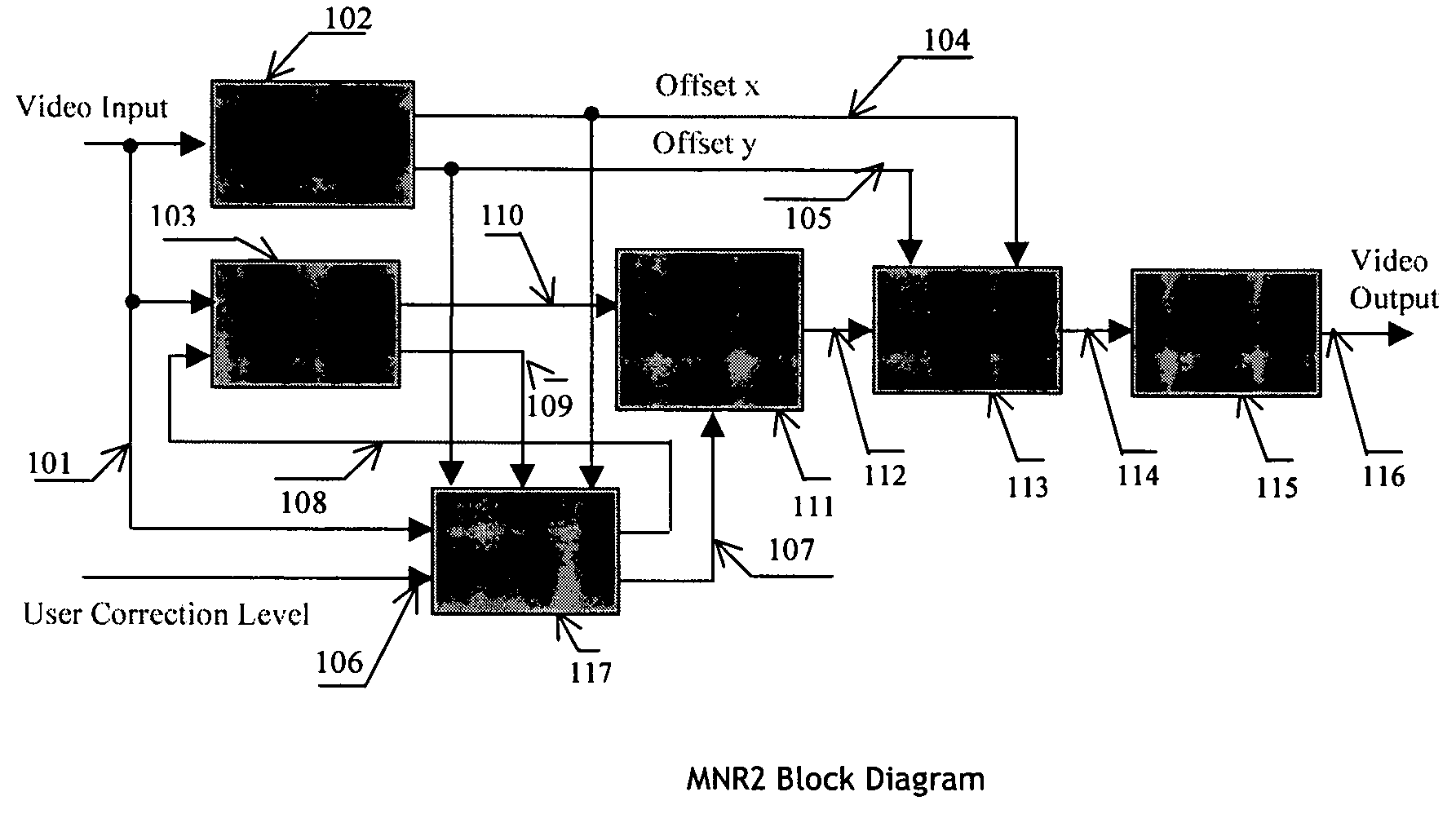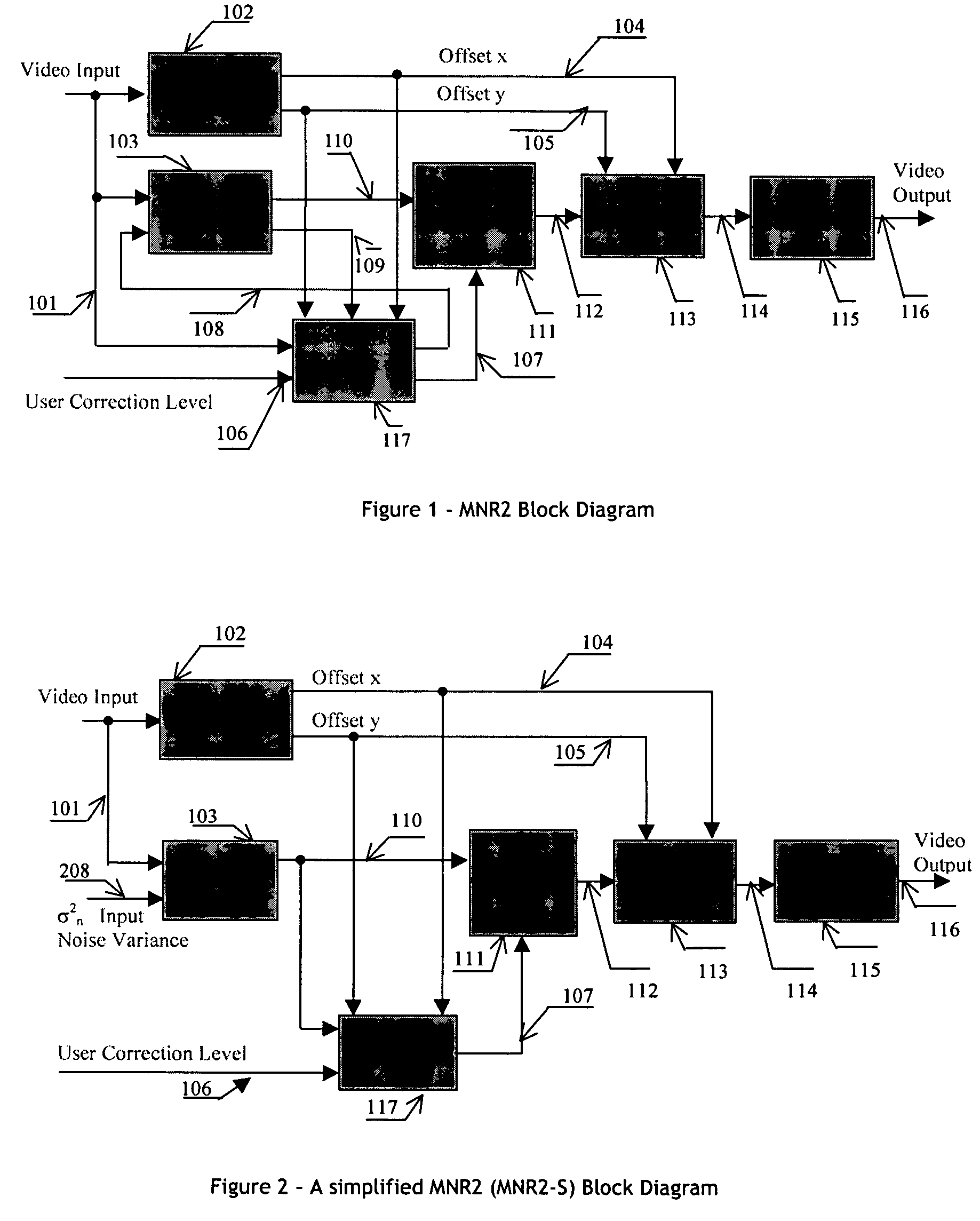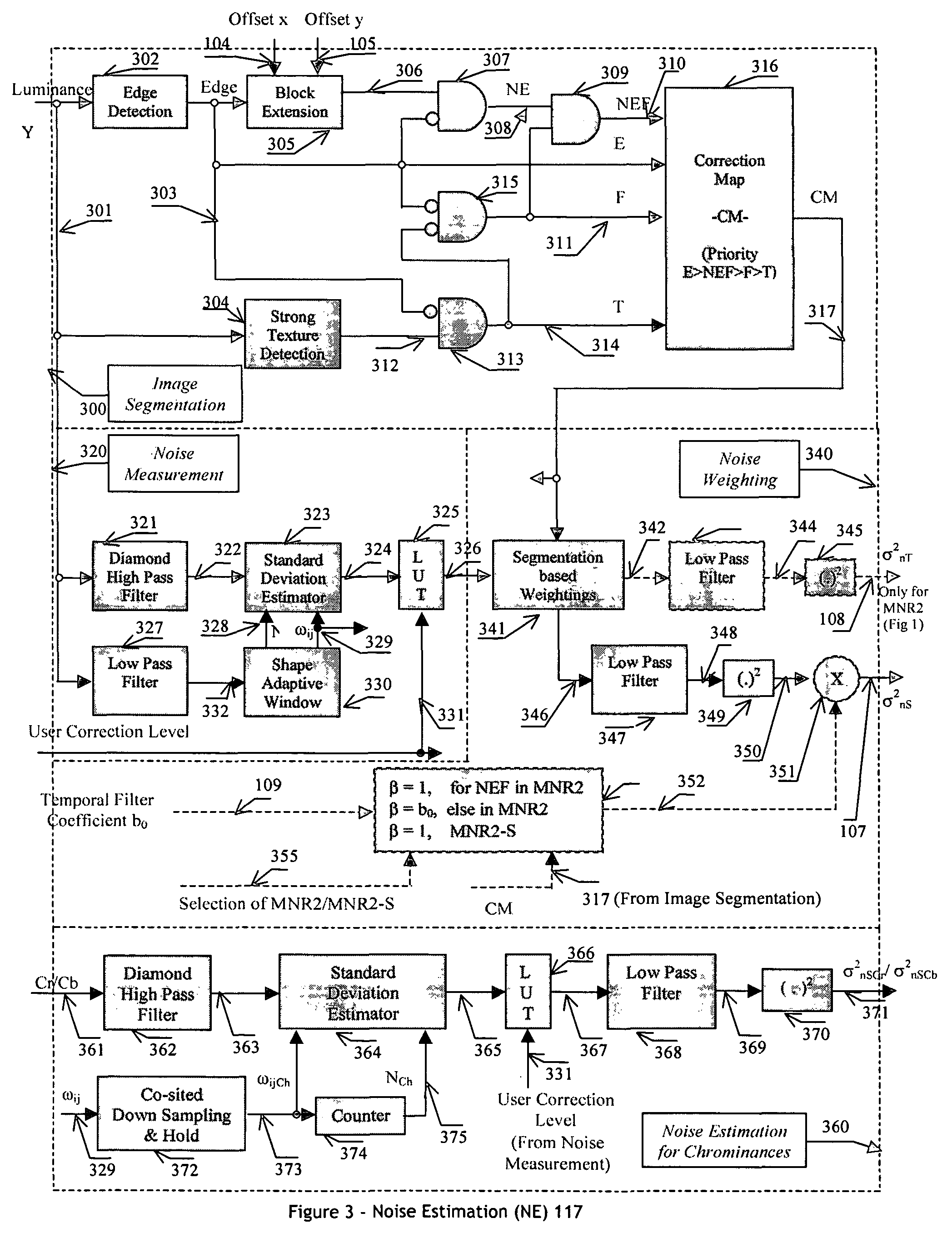Apparatus and method for adaptive 3D artifact reducing for encoded image signal
a technology of encoded image and artifact reduction, applied in image data processing, color television, television systems, etc., can solve problems such as block artifacts, mosquito noise can become evident for the human vision system (hvs), and block artifacts that can be easily detected by the human eye, so as to achieve efficient reduction of noise or artifacts
- Summary
- Abstract
- Description
- Claims
- Application Information
AI Technical Summary
Benefits of technology
Problems solved by technology
Method used
Image
Examples
Embodiment Construction
[0040]Referring now to the drawings, FIG. 1 represents a block diagram of an embodiment of a MPEG noise reduction apparatus MNR210 in accordance with the invention.
[0041]The MNR2 apparatus 10 receives two main system inputs. The first received input 101 is an image video signal comprising luminance Y and chrominance Cr / Cb components. For simplicity purpose, FIG. 1 illustrates only a video input signal.
[0042]The skilled addressee will understand that, except different indications, such system components may be implemented in a time sharing manner or in parallel as it is well known in the art.
[0043]The second input corresponds to a user correction level which is applied at input 106.
[0044]The user correction level at input 106 may represent, for instance, an intensity of noise correction or, if possible, coding transmission rate. In a preferred implementation, this user correction level input is controlled by an end-user in a heuristic manner.
PUM
 Login to View More
Login to View More Abstract
Description
Claims
Application Information
 Login to View More
Login to View More - R&D
- Intellectual Property
- Life Sciences
- Materials
- Tech Scout
- Unparalleled Data Quality
- Higher Quality Content
- 60% Fewer Hallucinations
Browse by: Latest US Patents, China's latest patents, Technical Efficacy Thesaurus, Application Domain, Technology Topic, Popular Technical Reports.
© 2025 PatSnap. All rights reserved.Legal|Privacy policy|Modern Slavery Act Transparency Statement|Sitemap|About US| Contact US: help@patsnap.com



